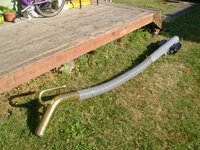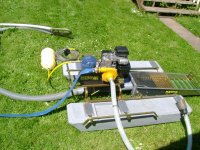principedeleon
Sr. Member
- Oct 22, 2013
- 449
- 151
Hello everyone. .
I have been gathering parts to try to build a 4" trevs suitcase dredge. .
And i have found a Keene P90 pump and i been trying to power a 4" suction nozzle but not getting great results. .
Ima try to reduce all friction lose in my suction nozzle to see if i get better results.
I have made the jet at the nozzle 1/2 " and my inlet 1" since i couldnt find 1 1/4 hose.
My suction was strong enough for 2" rocks but it was struggling with the larger rocks.
Looking to get the best out of it in 4" instead of running a 3".
Let me know what ya think. .
Thanks.
I have been gathering parts to try to build a 4" trevs suitcase dredge. .
And i have found a Keene P90 pump and i been trying to power a 4" suction nozzle but not getting great results. .
Ima try to reduce all friction lose in my suction nozzle to see if i get better results.
I have made the jet at the nozzle 1/2 " and my inlet 1" since i couldnt find 1 1/4 hose.
My suction was strong enough for 2" rocks but it was struggling with the larger rocks.
Looking to get the best out of it in 4" instead of running a 3".
Let me know what ya think. .
Thanks.






